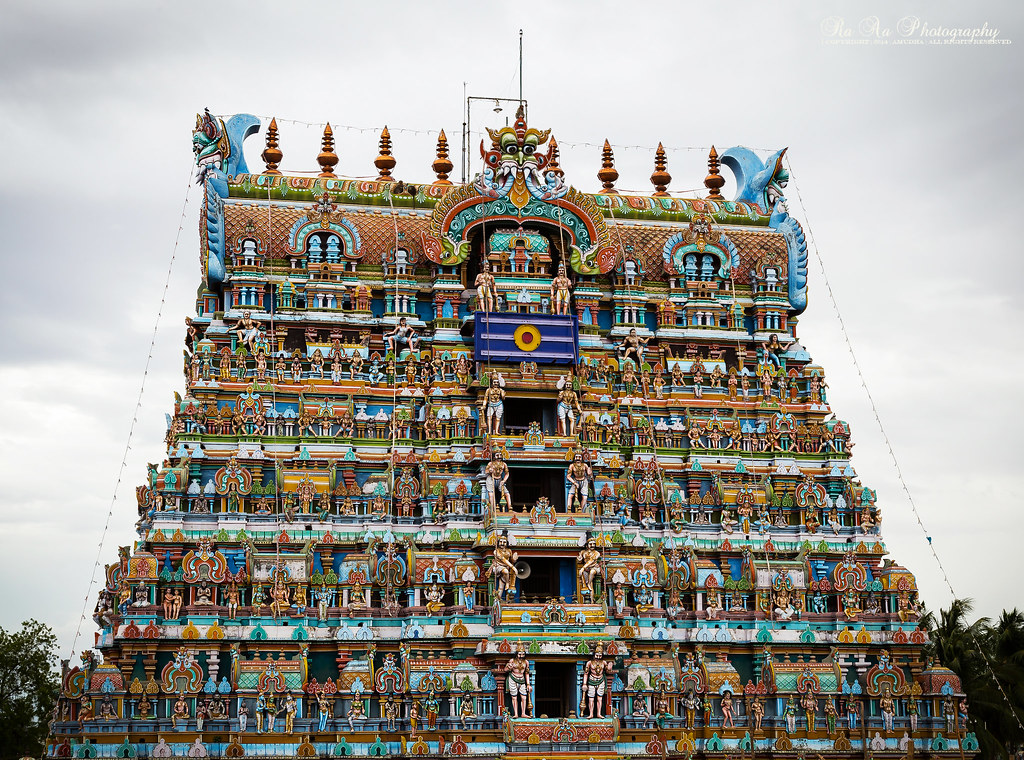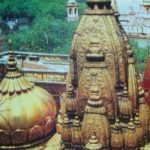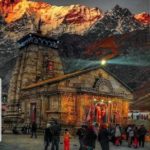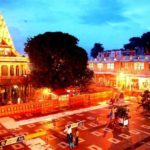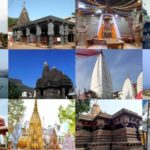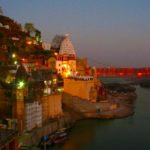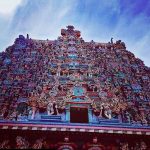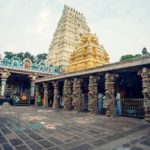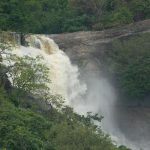The Nellaiappar Temple is an ancient temple of Lord Shiva. It is located on the banks of the Thamirabarani River in Tirunelveli. This beautiful temple is a Pancha Sabhai Sthalam that is very important to the devotees of Lord Shiva. The temple is also a Paadal Petra Sthalam.
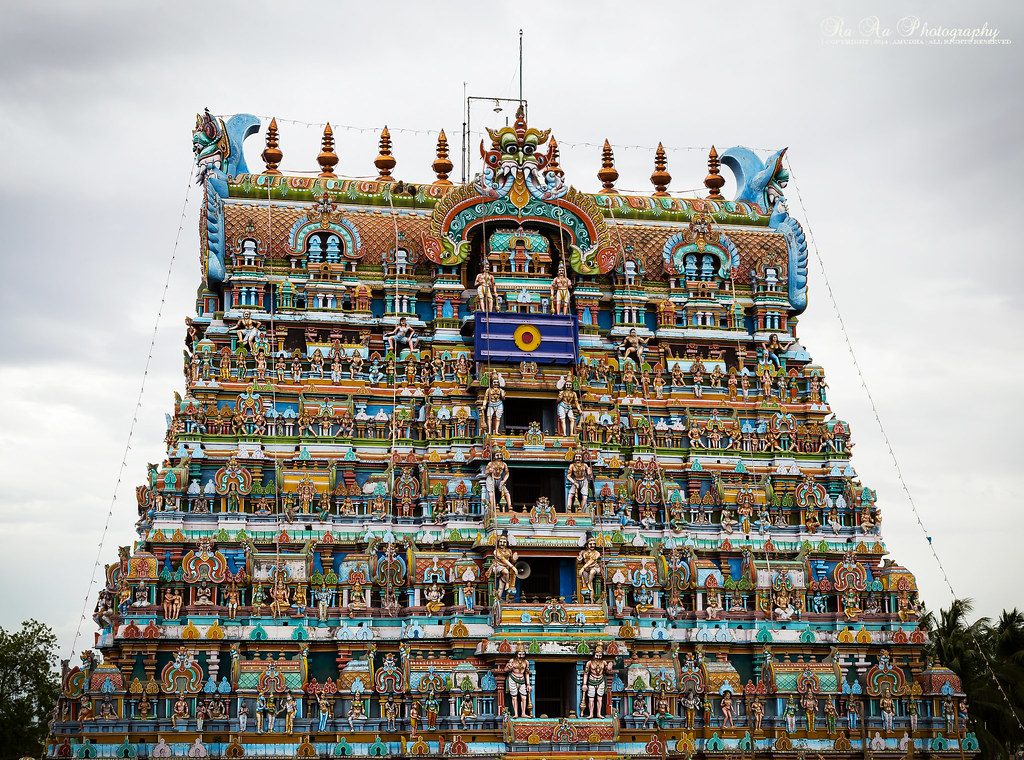
Image Source
History
The Pandya Kings built the original temple. The Cholas, Pallavas, Cheras and also the Nayaks added to the original structure. Nindraseer Nedumaran (Koon Pandian) who ruled in the 7th century AD built the Gopurams (towers) as well as the inner sanctums of the temples. He also added the Mani Mandapam and the musical pillar. The Nellaiappar and Kanthimathi temples were individual temples until 1647 when Thiru Vadamalaiappa Pillaiyan linked the two with the Sangli (chain) Mandapam. Thiru Venkata Krishna Mudaliar designed and planted the flower garden in 1756. A square Vasantha Mandapam which is a hall with 100 pillars is located in the middle of the flower garden. The temple also has many old inscriptions of historical interest.
Legend
There was once a poor Brahmin called Veda Sarma. He was a devotee of Lord Shiva. He begged for alms and then offered these alms to Lord Shiva. One day when he was drying paddy to offer to Lord Shiva it started raining. Veda Sharma worried that the paddy that he was drying would get washed away in the rain. He then prayed for help to the Lord. So, Lord Shiva protected the paddy by standing around it like a fence and covering it. The Tamil word for paddy is ‘Nel’ and that for a fence is ‘Veli’. Hence the place was named Tirunelveli and Lord Shiva was thereafter called Nellaiappar.
Anavarata Khan
The wife of a Nawab was suffering from an acute disease. She consulted a few Brahmins for a cure. They advised her to worship Nellaiappar and perform certain rituals at the Nellaiappar Temple. She did as advised and performed the required rituals through the temple priests. Her disease was cured and she also had a son. This boy was Anavarata Khan. A Lingam was then built in his name in a corner of the Prakaram. An opening in the wall opposite the Lingam allowed the Nawab and his son to worship while standing outside the temple.
Venuvanathar Legend
Another legend of the temple states that Lord Shiva took the form of a Lingam at Tirunelveli. The four Vedas stood around the Lingam in the form of bamboo trees. They gave him shade. Venu means bamboo tree and Vanam means forest. Lord Shiva is therefore also Venuvananathar.
Another legend also states that the area a bamboo tree forest. It was called Venuvanam. A milkman by the name of Rama Konar used to pass through the bamboo forest every day. He used to stumble on something and drop his milk pot at the same place every day. When he then tried to clear the bamboo trees with an axe, he hit a stone. Blood started oozing out of it. He and the villagers investigated and found the Shiva Lingam in the bamboo forest. This is why the Lingam that appeared in the middle of the bamboo forest was called Venuvananathar.
The Marriage Of Lord Shiva And Parvathi
Another legend states that Lord Vishnu was witness to the marriage of Lord Shiva and Goddess Parvathi in this place. When the wedding took place there was a huge congregation in the North to witness the wedding. This would have affected the balance of the earth. So, Lord Shiva sent the Sage Agathiyar to the south with the promise that he could witness the wedding from there. He witnessed the wedding in Thirunallur, Papanasam, Thirumaraikadu and also in Tirunelveli.
Architecture
The temple has concentric rectangular walls with a huge Rajagopuram. The entire temple complex spans 14.5 acres. The Sangli Mandapam connects the Nellaiappar temple and the Kanthimathi Amman temple, the main shrines.
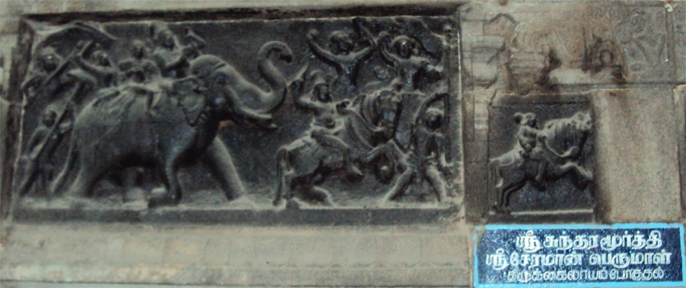
Image Source
The Temple Halls Or Mandapams
The temple has different halls with distinct designs used for different purposes. These halls are Mandapams.
One Thousand Pillared Mandapam
This hall with 1000 pillars is 520 feet long and 63 feet wide. It looks like a turtle holds the hall on its shoulders. This is in line with a legend that Lord Vishnu in the form of a turtle bears the Mandapam on his shoulders. The annual celebration of the wedding or Thirukalyanam of Nellaiyappar and Ganthimathi Amman happens in this hall.
Oonjal Mandapam
After the Thirukalyanam or divine wedding ritual, the Oonjal and baby shower festivities are conducted in this hall. It features beautiful sculptures and 96 pillars which represent the 96 philosophies.
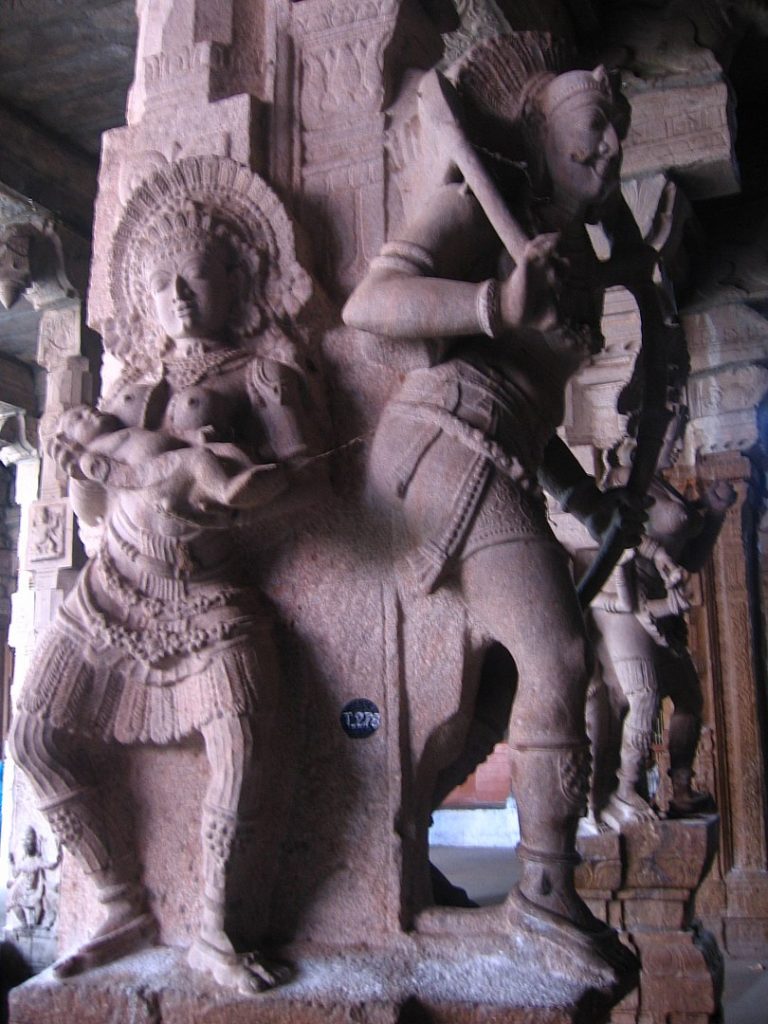
Sculpture Inside The Nellaiappar Temple
Image Source
Somwar Mandapam
This is a 78 pillared hall. The Karthigai Somwar celebrations are celebrated in this hall with Abishekam for the Panchamoorthy.
Sangli / Chain Mandapam
This is the hall that links the temples of Lord Shiva and his consort and is thus called the Sangli or chain mandapam. It has many columns depicting Vaali, Sugreeva, Purusha Mirugam, Bheema as well as Arjuna.
Mani Mandapam
Mani means bell and this hall has a bell hanging in the middle. It features musical pillars made from a single rock that emit notes of different pitches when struck. This hall has 48 pillars.

Image Source
Pancha Sabhai Sthalam
Paadal Petra Sthalam – Literary Mention
There are five temples where Lord Shiva performed the cosmic dance. Each of these temples and halls has a unique name and legend. Together they are the Pancha Sabhai Sthalams. The Nellaiappar Temple is one of the Pancha Sabhai Sthalams. It is the Thaamirai Ambalam which means copper hall/stage. The other Pancha Sabhai Sthalams are the Vadaranyeswarar Temple, Thiruvalangadu, the Nataraja Temple, Chidambaram, the Kutralanathar Temple, Kutralam/Courtallam as well as the Madurai Meenakshi Temple, Madurai.
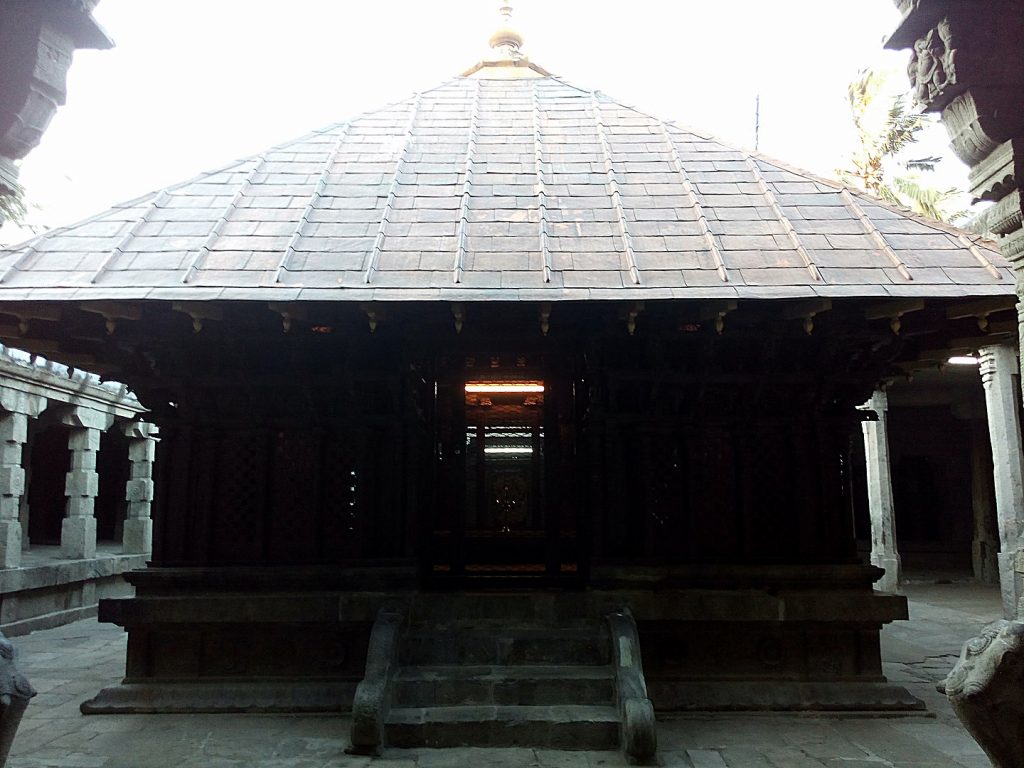
Image Source
The temple finds mention in many important texts. The Nayanmars who are 7th century poets praise Nelliappar in 10 verses contained in the first Murai of the Thevaram. Sundarar, a Nayanmar from the 8th century also mentions the temple in the fifth Murai. Temples that are mentioned in the Thevaram are called Paadal Petra Sthalam.
Interesting Facts About The Nellaiappar Temple
- The temple is the shrine where Thirugnyanasambanthar sang. It is also the shrine where Muthuswami Dikshitar sang Sri Gandhimathi in the Hemavathi Raga.
- The Saayaratachai Pooja in the Panguni month of the Tamil calendar strengthens the married life of women. The Nellaiappar temple also celebrates an annual Amavasai Pathiradepam (ten thousand lamps) festival in the Thai month of the Tamil calendar. A Latchadeepam (one lakh lamp) festival is held every 6 years. Those who have failed to perform rituals for their Pitrus light a lamp during these festivals.
- The temple also conducts a Shri Vidhya Homam to improve education.
- The Nellaiappar temple has many special Sannithis (shrines) such as; Thiru Moola Mahalingam, Nellai Govindhar with a Shivalinga on his bust, Guberalinga, Sangathi Sages, Agasthiyar, Kabilar, Gnananatha Thakshina Moorthy, Siddha Amavasai Paradesi, Gurumurugan etc.
- The Sannidhi for Lord Suradevar depicts him with three faces. Devotees worship him to cure fevers.
- Childless women pray at the Sannithi of Pollapillayar with Pillaithondu Paathai Worshipping Mahishasura Marthini Amman and Manjana Amman on Tuesdays and Fridays during Rahu Kalam gives relief from enemies
- The temple has also has a Goddess Saraswathi Sannidhi
- The shrine of Sri Pittapurathi Amman cures problems with infants
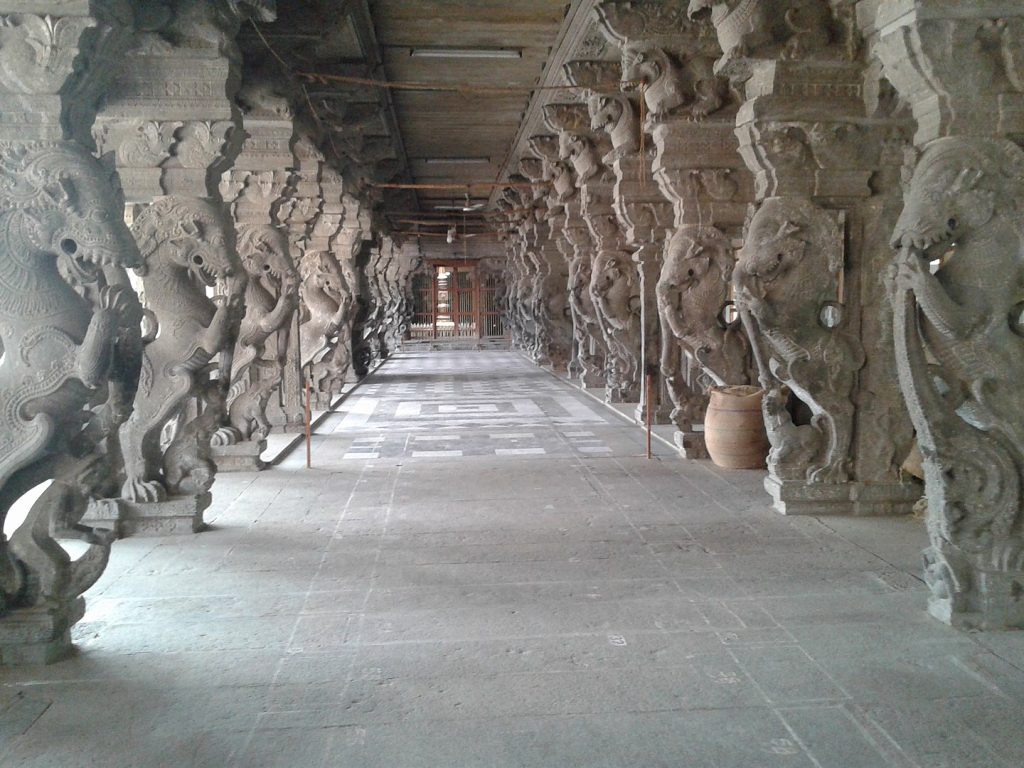
Image Source
Festivals And Important Days
The temple celebrates Navratri, Thirukalyanam and Arudra Darisanam as the most important festivals. The devotees celebrate Thirukalyanam in the Tamil month of Aippasi which is around mid-October to mid-November.
The temple car is huge and is second in size to the Tiruvarur temple car and the third largest in the state. The temple also uses a golden car during all the important festivals and celebrations. Thaipoosam is also celebrated. The deities are taken to the Thaipoosam Mandapam that is located on the banks of the Thamirabarani River. After the rituals by the river, the deities ceremonially return to the temple after nightfall.
Nellaiappar Temple Timings And Rituals
The temple performs daily Poojas or rituals six times a day. There are also certain rituals on a weekly basis such as the Somvaram (Monday) and the Shukravaram (Friday) rituals. The temple observes Pradosham every fortnight as well as the monthly lunar dates of Amavasya (new moon), Pournami (full moon), Kiruthigai as well as Chaturthi. The Nellaiappar temple also celebrates a Thai Aaratu festival in the Tamil month of Thai.
Nellaiappar Kovil Timings
Morning : 05.30 AM TO 12.30 P.M
Evening : 04.00 PM TO 08.30 PM
Contact Details
nellaikanthimathiamman@gmail.com
Temple EO: 8973330707, 04622339910
http://kanthimathinellaiappar.tnhrce.in




